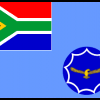Hello again everyone,
Apologise for the slow follow up. This would have been easier with pictures, unfortunately I wanted to attach images from my own collection (not from a website) but don't know how.
So I've tried to keep it brief. How the boat is mounted to the aircraft, the following is an abridged version .
Along the centre-line of the boat, beneath the deck and joining the latter to the keel is a mahogany keelson. Secured on each side on the keelson near the after end of the centre-board slot is a wooden block, drilled & shaped to receive the bomb-release attachment & tension nut's fitted at 6ft 9in aft the bow (Ed, like the Hudson). When the attachment is inserted it's bolts extend to just shy of the bottom of the boat to receive the tension nuts coming through the hull from below ,these incorporate tubular internal threaded extensions which when coupled with steel plates (shaped to suit) at both ends protect the hull and also provide the means for final adjustments on shipping , that is they are tightened to bring the gunwales of the boat against the fuselage. A small door fitted on the starboard side of the boat (sort of visible in the 1st picture just forward of the swivel ladder bolted on the side) provides access to inside the hull to the release attachment when the boat is shipped or unshipped. The boat is attached directly to the E.M. release unit (over to you chaps for that one). The boat is freed by pressing the bomb release switch. To facilitate shipping etc and moving the boat a trolley is provided , its design obviates the use of the standard type winching equipment as the complete trolley is raised or lowered by jacks .
SHIPPING THE LIFEBOAT.
Before shipping check are to be made to ensure that the carrier aircraft is adapted to receive it. In instances with Modification 565 is incorporated ensure that the assembly adapter for airborne lifeboats has been fitted to the aircraft torpedo suspension beam. Ensure that the E.M release unit operates correctly by cocking selecting No16 (single & salvo) making the master switch and firing in the usual manner. The test should be repeated two or three times.
On completion of the forgoing checks prepare the boat for shipping. As follows: Slacken the tension nuts on the "Bomb release attachment (do not remove them completely) and raise it as high as possible.
Ensure that static lines to the operating head C,O2/safety switch & delay switches are free from obstructions etc. (includes prepping all of the release functions) that's another story.
Place the prop in a position to enables the boat to pass under the fuselage, position the boat so that the bomb release attachment is directly under the E.M release unit. Raise the boat evenly with the screw jacks fitted at each end of the trolley and after support chock until the bomb release attachment engages with the E.M unit on the aircraft. Engage the bomb release attachment from in side the aircraft or via the access door ( on the side of the hull). Connect the parachute static line, continue jacking up the boat till its gunwales touch the fuselage, make sure it lines up fore & aft and side to side. Then finally tighten the tension nuts through the hull.
So as you can see the normal torpedo wire strop is not used & the boat is only slung by one fixing . I have an image to show you if I could attach it.
Thanks again. Nev Dinghy Cole.









